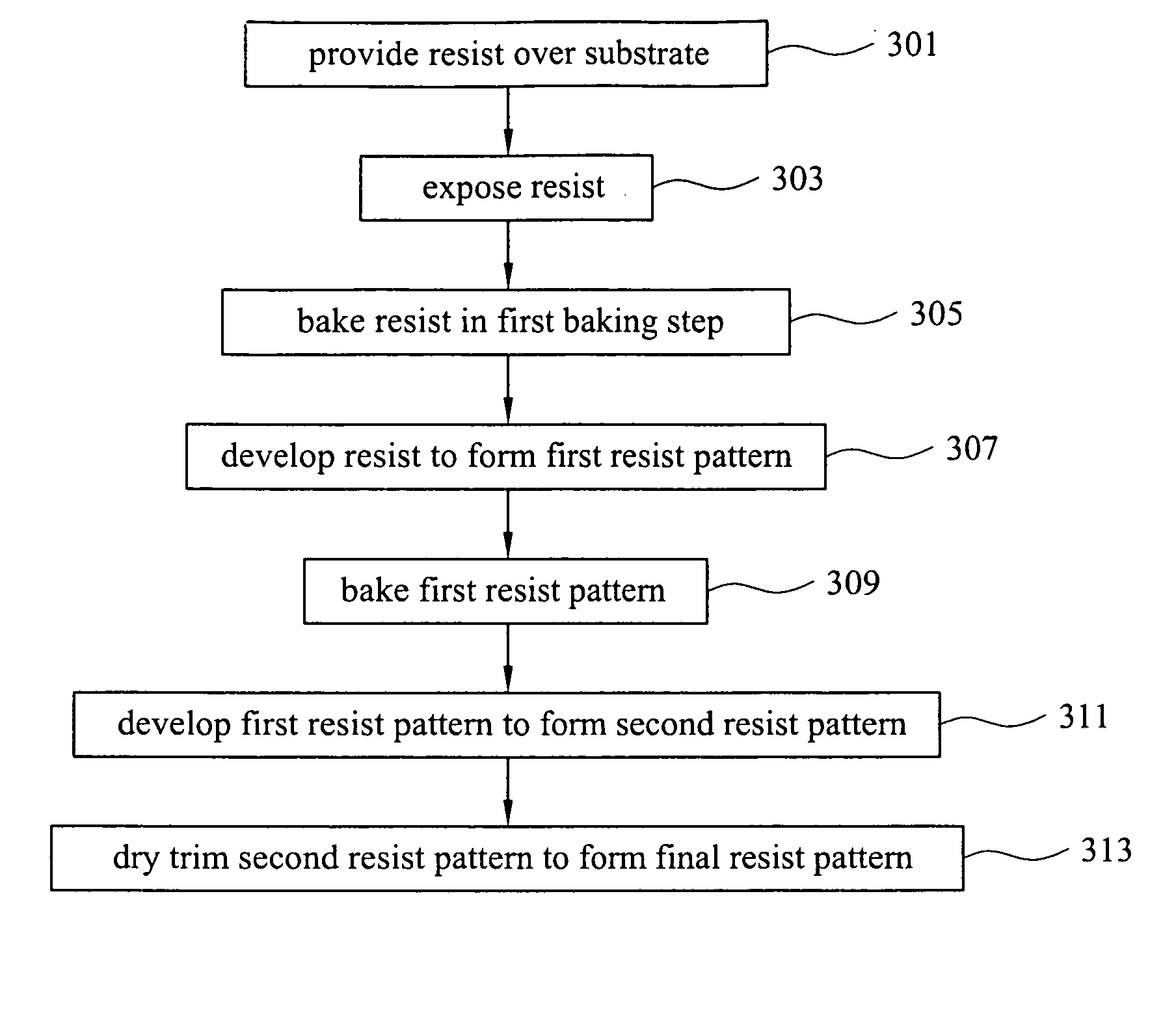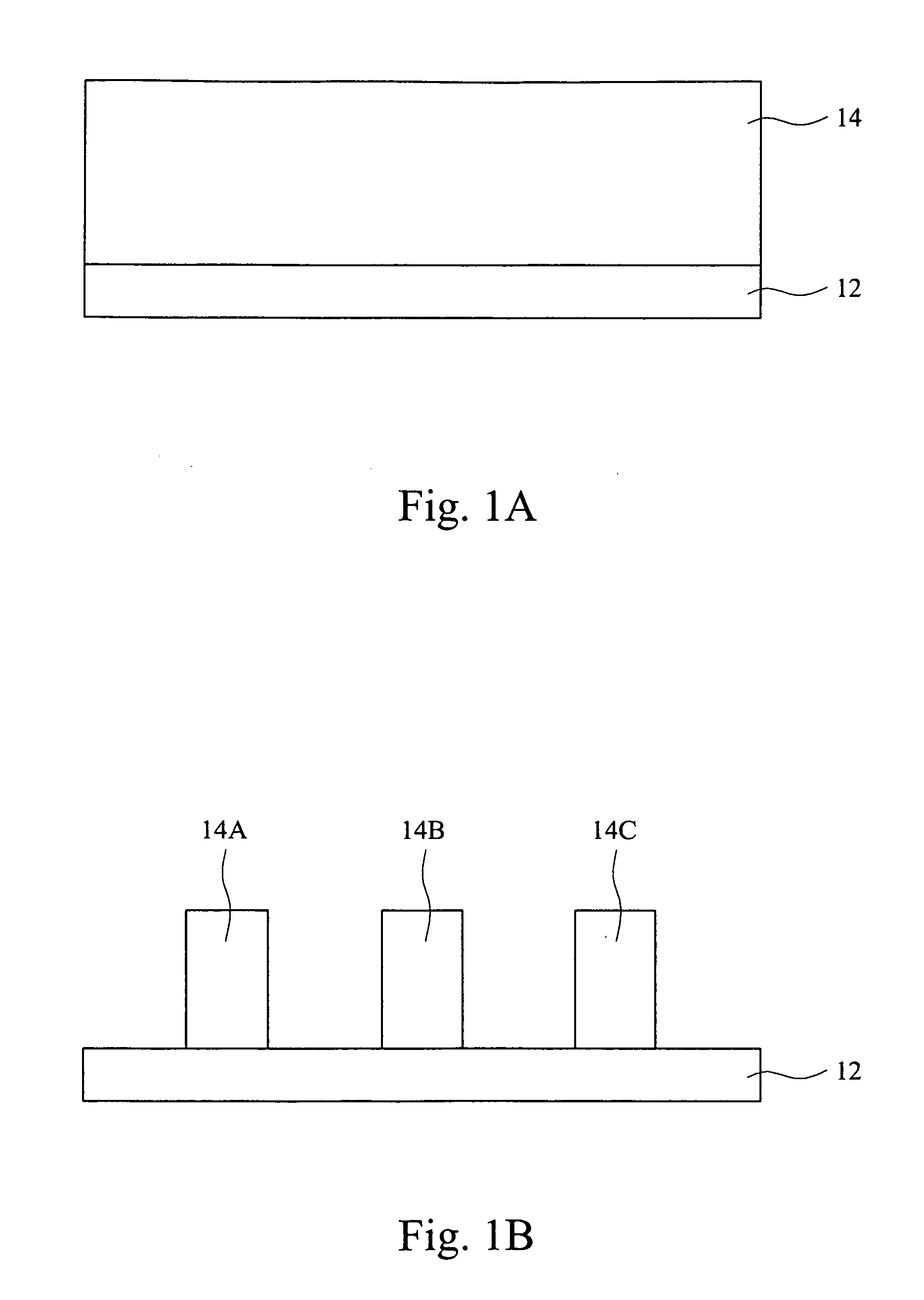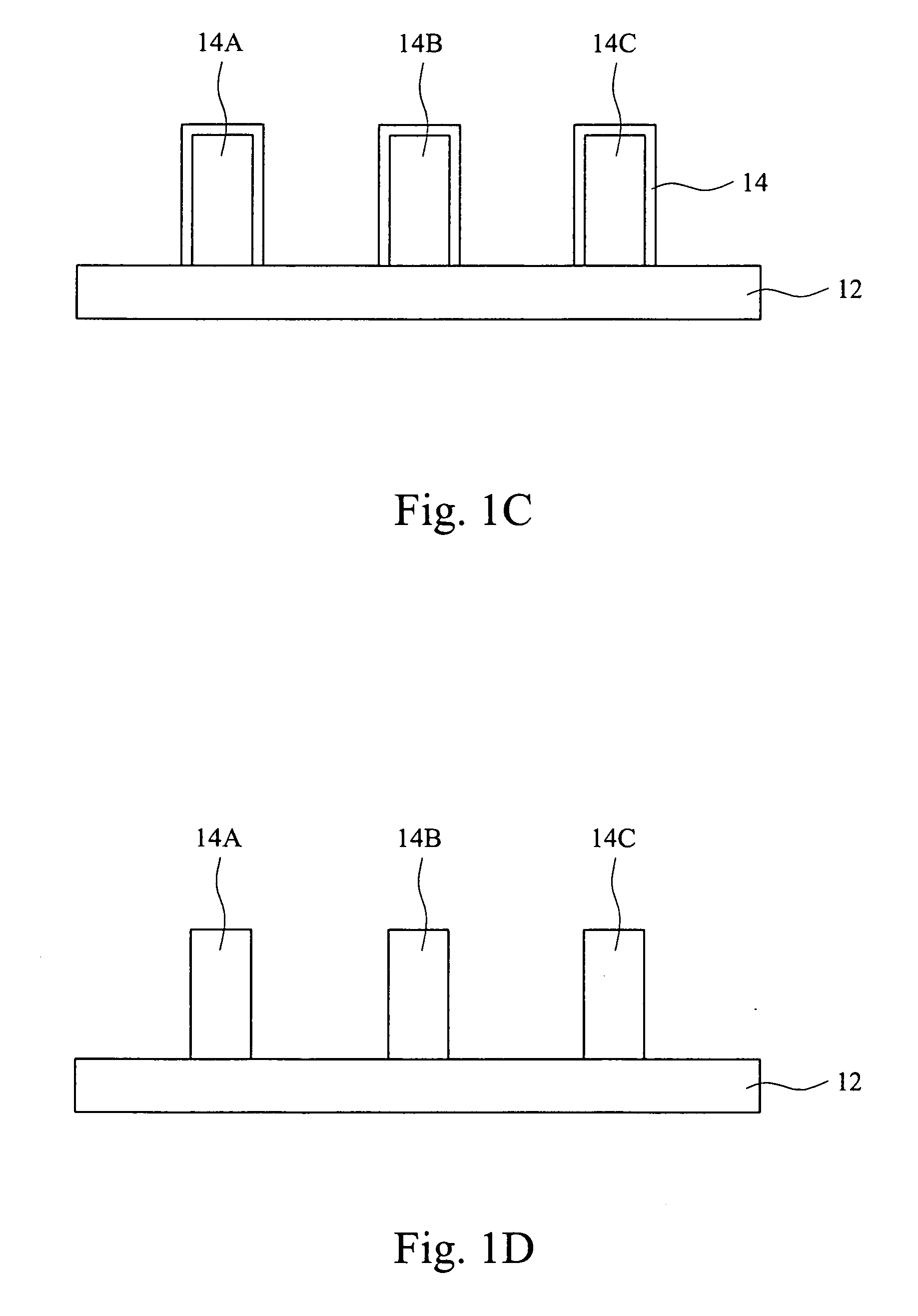Method for forming a finely patterned resist
- Summary
- Abstract
- Description
- Claims
- Application Information
AI Technical Summary
Benefits of technology
Problems solved by technology
Method used
Image
Examples
Embodiment Construction
[0015] Although the present invention is explained with respect to, and particularly advantageous for, the formation of conductive interconnect lines in a multi-level integrated circuit semiconductor device, the method of the present invention may be used to achieve reduced CD sizes, for example, less than the wavelength of the exposing (illuminating) light in a lithographic process, for any type of resist pattern having an elongated shape, e.g., lines where a width portion is less than a length portion.
[0016] Referring to FIG. 1A is shown a portion of resist layer 14 overlying a portion of a substrate 12. It will be appreciated that the substrate may be any type of substrate including a dielectric insulating layer or a conductive layer for forming an elongated (e.g., line) pattern therein, e.g., damascene interconnect lines. Photoresist layer 14, in an important aspect of the invention is preferably a chemically amplified (CA) photoresist including a photoacid generator (PAG) acid...
PUM
 Login to View More
Login to View More Abstract
Description
Claims
Application Information
 Login to View More
Login to View More - R&D
- Intellectual Property
- Life Sciences
- Materials
- Tech Scout
- Unparalleled Data Quality
- Higher Quality Content
- 60% Fewer Hallucinations
Browse by: Latest US Patents, China's latest patents, Technical Efficacy Thesaurus, Application Domain, Technology Topic, Popular Technical Reports.
© 2025 PatSnap. All rights reserved.Legal|Privacy policy|Modern Slavery Act Transparency Statement|Sitemap|About US| Contact US: help@patsnap.com



